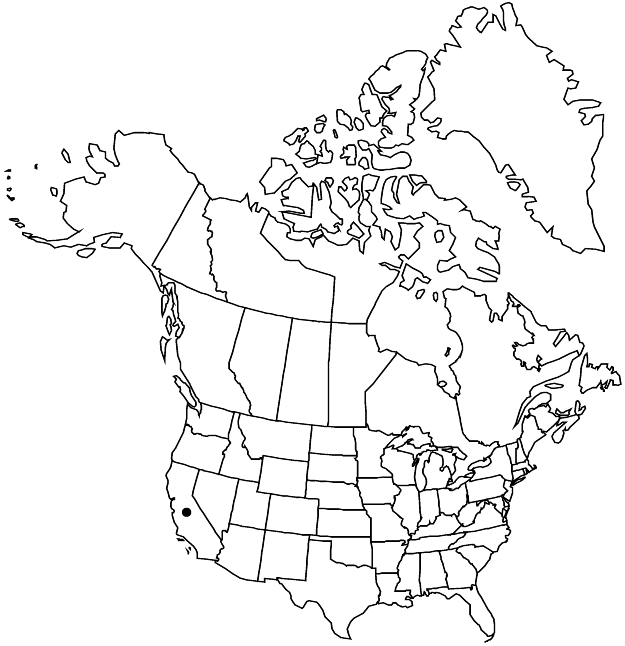Eriogonum umbellatum var. canifolium
Phytologia 86: 147. 2004.
Herbs, spreading mats, 1–2.5 × 3–10 dm. Aerial flowering-stems erect, slender, (0.5–) 1–1.8 (–2) dm, tomentose, without one or more leaflike bracts ca. midlength. Leaves in rather tight rosettes; blade elliptic, 0.4–2 × 0.3–0.7 (–0.9) cm, densely grayish-lanate on both surfaces or tomentose and grayish to greenish adaxially, rarely thinly floccose or glabrous on individual leaf-blades, margins plane. Inflorescences umbellate; branches 1–2.5 (–4) cm, tomentose to floccose, without a whorl of bracts ca. midlength; involucral tubes 2–3 mm, lobes 2–3.5 mm. Flowers (4–) 5–7 (–8) mm; perianths bright-yellow.
Phenology: Flowering Jun–Sep.
Habitat: Sandy granitic slopes, montane conifer woodlands
Elevation: 2400-2600 m
Discussion
Variety canifolium is found infrequently in the southern Sierra Nevada of Inyo and Tulare counties, and in the Argus Mountains to the east. It also occurs in the Transverse Ranges of southwestern Kern and western Los Angeles counties. The densely lanate leaf surfaces and the low, matted habit are distinctive features, especially when this variety is compared with the more commonly encountered var. nevadense of the Sierra Nevada. As the plants mature, the amount of tomentum on the adaxial surface of the leaf blades thins, and individual leaves can become floccose or even glabrous.
Selected References
None.
Lower Taxa
"dm" is not declared as a valid unit of measurement for this property."dm" is not declared as a valid unit of measurement for this property."dm" is not declared as a valid unit of measurement for this property."dm" is not declared as a valid unit of measurement for this property."dm" is not declared as a valid unit of measurement for this property.
